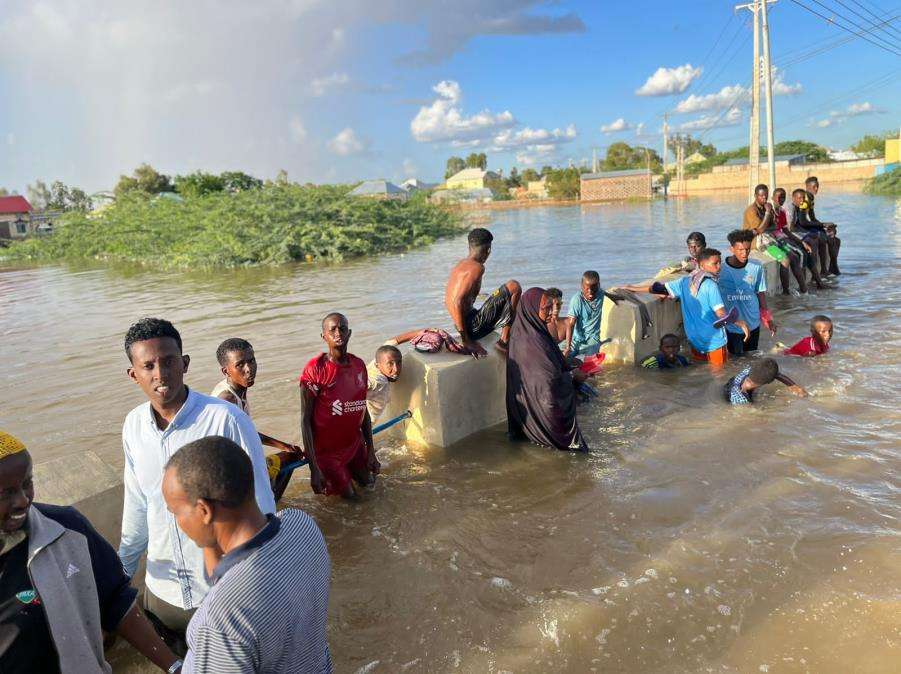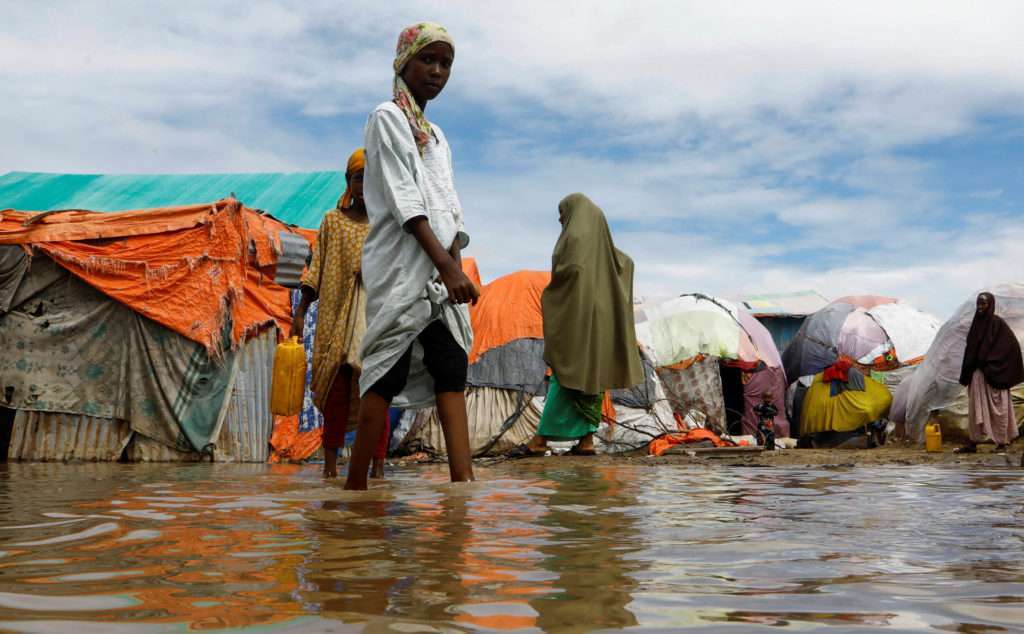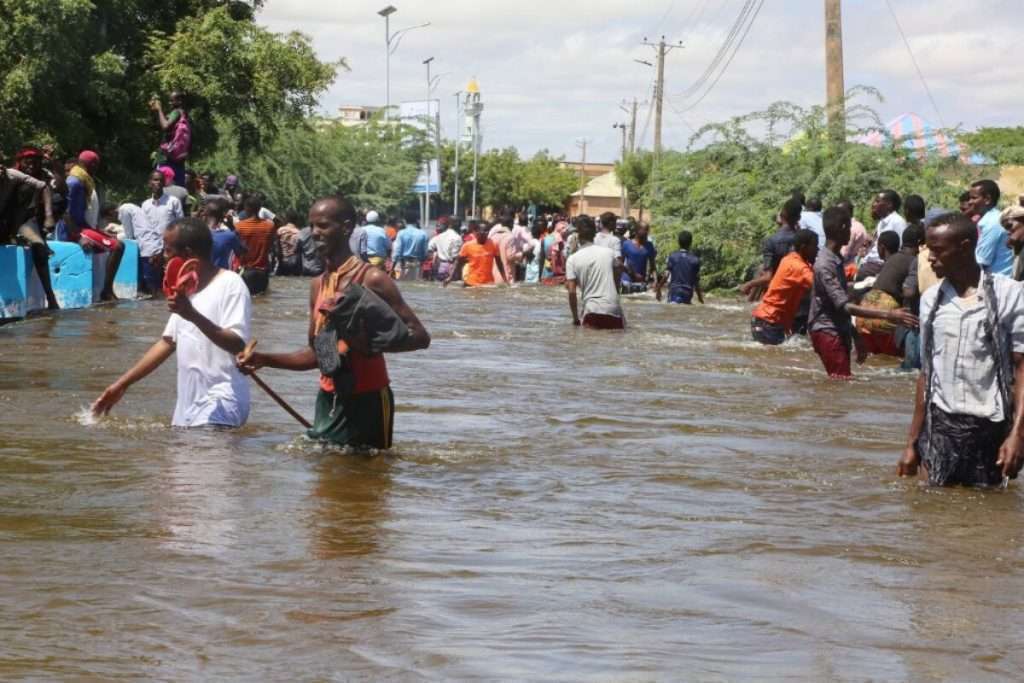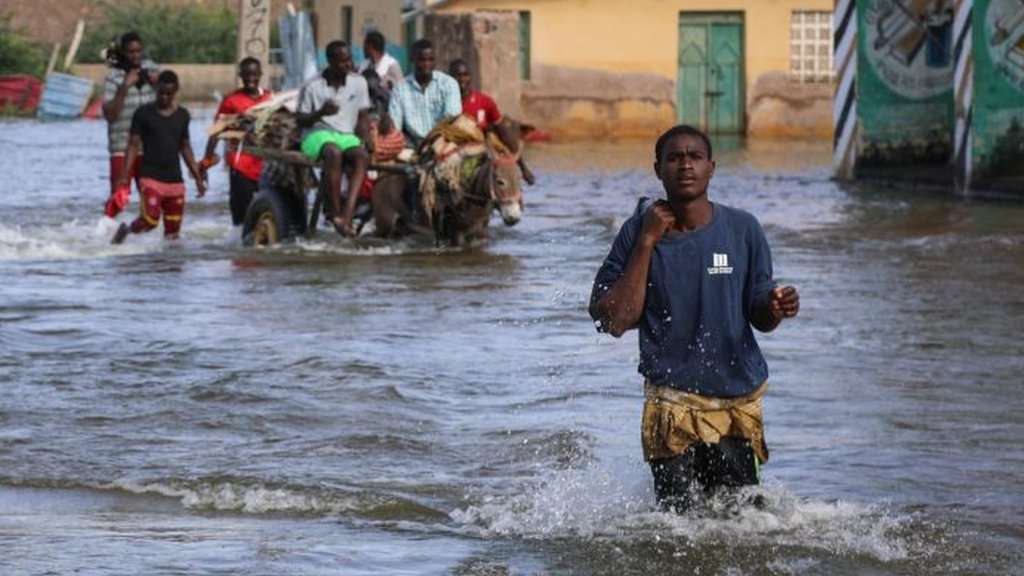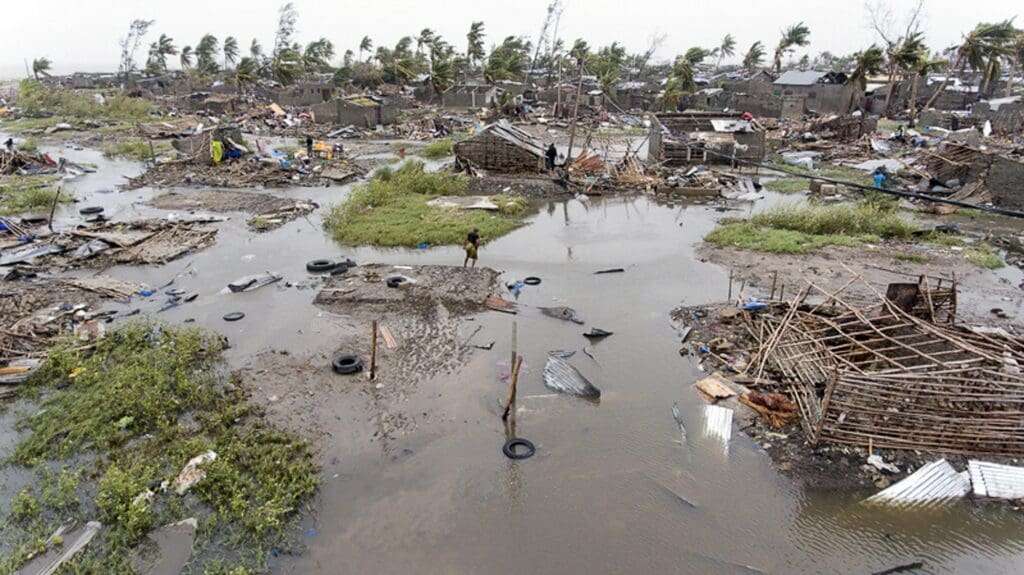The death toll from flooding in Somalia has climbed to nearly 100, as heavy rains continue to batter the country.
The flooding has been caused by the El Nino weather phenomenon, which has brought above-average rainfall to the Horn of Africa. The rains have caused widespread flooding, displacing hundreds of thousands of people and destroying homes and infrastructure.
The death toll is expected to rise as rescue workers continue to search for bodies. The United Nations has warned that the flooding could worsen in the coming weeks, as the El Nino weather pattern is expected to persist.
The flooding has exacerbated an already dire humanitarian situation in Somalia, which has been battling a long-running insurgency and a severe drought. The United Nations has appealed for $1.3 billion in aid to help Somalia cope with the floods.
The international community has been slow to respond to the crisis in Somalia, and there are fears that the country could face a famine if more aid is not forthcoming.
The flooding in Somalia is a reminder of the devastating impact of climate change. As the world’s climate continues to change, we can expect to see more extreme weather events, such as floods, droughts, and storms. These events will have a disproportionate impact on poor and vulnerable communities, who are often least equipped to cope with them.
A D V E R T I S E M E N T
Causes of Flood
Climate Change: Climate change is a major driver of extreme weather events, including floods. As global temperatures rise, the atmosphere can hold more moisture, leading to increased rainfall intensity and frequency. This is particularly evident in regions like Somalia, which is already prone to droughts and floods.
El Niño: El Niño is a cyclical climate pattern that occurs in the Pacific Ocean, characterized by warmer-than-average sea surface temperatures. El Niño events can trigger changes in global weather patterns, including increased rainfall in Somalia. The current El Niño phase is contributing to the severity of the floods.
Indian Ocean Dipole (IOD): The IOD is another climate pattern that affects rainfall in Somalia. During a positive IOD phase, warmer-than-average sea surface temperatures occur in the western Indian Ocean, leading to increased rainfall in eastern Africa, including Somalia. The current IOD phase is intensifying the flooding.
Deforestation and Land Degradation: Deforestation and land degradation reduce the land’s ability to absorb and retain water, increasing the risk of floods. Somalia has experienced significant deforestation due to factors like charcoal production and agricultural expansion.
Inadequate Infrastructure: Somalia’s infrastructure, particularly drainage systems, is not well-equipped to handle extreme rainfall events. This leads to waterlogging and overflows, exacerbating the flooding situation.
Urbanization: Rapid urbanization in Somalia has led to increased settlement in flood-prone areas, putting more people at risk. Poor urban planning and a lack of adequate flood protection measures contribute to the severity of flooding.
Addressing the flooding in Somalia requires a multi-pronged approach that tackles both the immediate humanitarian needs and the underlying causes. This includes providing relief aid, investing in climate adaptation measures, improving infrastructure, and promoting sustainable land management practices.
Impact of the Flood
The flooding has had a devastating impact on Somalia. Homes, schools, and hospitals have been destroyed, and roads and bridges have been washed away. Thousands of acres of farmland have been inundated, and livestock have been lost.
Palacios is a graduate of the Universidad Americana in Managua, Nicaragua, with a degree in audiovisual communication. She is currently working on her master’s degree in business administration at the same university.
Palacios is a talented and accomplished individual who is sure to make a positive impact on the world. She is an inspiration to women and girls everywhere. She is a reminder that anything is possible if you set your mind to it.
industry.
A D V E R T I S E M E N T
The United Nations has launched an appeal for $1.5 billion to help Somalia respond to the flooding crisis. The aid will be used to provide food, shelter, water, and sanitation to those affected by the floods.
A D V E R T I S E M E N T
The Way Forward
The flooding in Somalia is a reminder of the urgent need to address climate change. In addition to providing humanitarian assistance, the international community must also work to help Somalia build resilience to future climate shocks.
Somalia is a country located in the Horn of Africa. It has been experiencing recurrent flooding in recent years, with the most severe floods occurring in 2019 and 2020. These floods have caused widespread damage to infrastructure, homes, and crops, and have displaced millions of people.
There are a number of factors that contribute to flooding in Somalia, including climate change, deforestation, and land degradation. Climate change is leading to more extreme weather events, such as heavier rainfall and more intense cyclones. Deforestation is reducing the amount of vegetation that can absorb rainwater, and land degradation is making the soil less porous, so that more water runs off the surface.
The Somali government and international organizations are working to address the issue of flooding in Somalia. Some of the measures that are being taken include:
- Building flood-resistant infrastructure, such as dams, levees, and drainage systems.
- Planting trees to help restore forests and increase the amount of vegetation that can absorb rainwater.
- Implementing sustainable land management practices to improve soil porosity and reduce erosion.
- Providing early warning systems to communities so that they can evacuate to safer areas before floods occur.
The way forward for Somalia in terms of flood management is to continue to invest in flood-resilient infrastructure, sustainable land management practices, and early warning systems. Additionally, it is important to raise awareness of the issue of flooding and to educate communities about how to prepare for and respond to floods.
Here are some of the specific projects that are being undertaken to address flooding in Somalia:
- The World Bank is funding a project to build flood-resilient infrastructure in Beledweyne, a town that is particularly vulnerable to flooding.
- The Food and Agriculture Organization of the United Nations (FAO) is working with communities to implement sustainable land management practices.
- The United Nations Office for the Coordination of Humanitarian Affairs (OCHA) is providing early warning systems to communities in flood-prone areas.
These are just a few examples of the many projects that are underway to address flooding in Somalia. With continued investment and collaboration, it is possible to build a more resilient Somalia that is less vulnerable to the devastating effects of floods.
A D V E R T I S E M E N T

